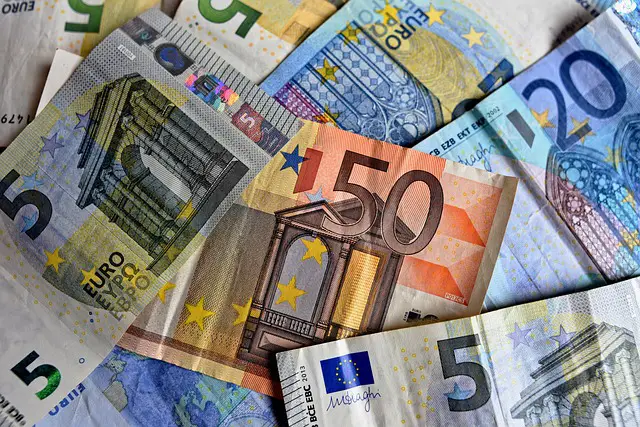What is a Currency?

What is a Currency? A currency is a medium of exchange that is widely accepted in a particular country or region for the purpose of facilitating transactions of goods and services. Currencies can take many forms, such as physical banknotes and coins, or digital forms such as credit or debit cards, mobile payments, and cryptocurrencies.
Currencies are used as a means of payment to settle debts, trade, and commerce, and they are generally backed by the issuing government or central bank, which guarantees their value and stability. The value of a currency is determined by various factors, including supply and demand, economic and political stability, and the overall health of the economy. Exchange rates are used to compare the values of different currencies in relation to each other, which is essential for international trade and commerce.
How Does Currency Work?
Currency works as a medium of exchange that facilitates transactions of goods and services. It allows people to buy and sell items without the need for barter or direct exchange of goods. Here are the basic steps of how currency works:
- The government or central bank issues and regulates the supply of currency. This can be in the form of physical banknotes and coins or digital currency.
- People receive currency as payment for goods and services they provide.
- Currency is then used to purchase other goods and services from others.
- The value of a currency is determined by various factors, including supply and demand, economic and political stability, and the overall health of the economy.
- Exchange rates are used to compare the values of different currencies in relation to each other, which is essential for international trade and commerce.
- Governments and central banks can also influence the value of a currency by implementing policies such as interest rate changes and quantitative easing.
- When people hold onto currency for longer periods, they can earn interest or face inflation, which affects the value of their holdings.
In summary, currency facilitates the exchange of goods and services and is regulated by governments and central banks. Its value is determined by various factors and can be influenced by policies and economic conditions.
What is the History of Currencies?
The history of currencies dates back to ancient times when people used barter trade, exchanging goods and services for other goods and services. However, as trade became more complex, it became increasingly difficult to use barter, and people started using various forms of currency.
The first known currency was the use of cowrie shells, which were used as a medium of exchange in China around 1200 BCE. The ancient Greeks used metal coins as a currency, and the first coins were minted in Lydia, a region in modern-day Turkey, in the 7th century BCE.
In the Middle Ages, the use of coins became more widespread, and various types of currencies emerged, including gold and silver coins. Paper money was first used in China during the Tang Dynasty in the 7th century, but it was not until the 17th century that paper money was adopted in Europe.
The use of modern paper currencies was first established during the 19th century when governments began to issue banknotes that were backed by gold or silver. In the early 20th century, most countries adopted a gold standard, which meant that the value of a currency was fixed to a specific amount of gold.
However, during the Great Depression, many countries abandoned the gold standard, and currencies became fiat currencies, meaning that their value was no longer backed by a physical commodity. Today, currencies take many forms, including physical banknotes and coins, digital currencies, and various forms of electronic payment systems.
Types of Currencies
There are various types of currencies that exist, each with different characteristics and uses. Here are some of the most common types of currencies:
- Fiat currency: A currency that is not backed by a physical commodity such as gold, but instead relies on the trust and stability of the issuing government or central bank.
- Digital currency: A currency that exists solely in digital form and is created and managed through encryption techniques. Examples of digital currencies include cryptocurrencies like Bitcoin and Ethereum.
- Commodity currency: A currency that is backed by a physical commodity, such as gold, silver, or oil.
- Reserve currency: A currency that is held in significant quantities by central banks and is used as a means of international trade, investment, and finance. The US dollar is currently the world’s primary reserve currency.
- Local currency: A currency that is used within a specific region or locality and is intended to support local economies and businesses.
- Hard currency: A currency that is stable, reliable, and widely accepted in global markets. Examples of hard currencies include the US dollar, Euro, Japanese yen, and Swiss franc.
- Virtual currency: A currency that is used within virtual communities, such as online games and social networks.
These are just a few examples of the many types of currencies that exist. Each type of currency has its unique characteristics, uses, and challenges.
What Are the Most Popular Currencies?
The Top 20 Most Popular Currencies in the world are those that are widely accepted and used for international trade, commerce, and investment. Here is a list of some of the most popular currencies, in no particular order:
- United States Dollar (USD)
- Euro (EUR)
- Japanese Yen (JPY)
- British Pound (GBP)
- Swiss Franc (CHF)
- Canadian Dollar (CAD)
- Australian Dollar (AUD)
- Chinese Yuan (CNY)
- New Zealand Dollar (NZD)
- Hong Kong Dollar (HKD)
- New Zealand Dollar (NZD)
- Swedish Krona (SEK)
- Norwegian Krone (NOK)
- Singapore Dollar (SGD)
- South Korean Won (KRW)
- Turkish Lira (TRY)
- Mexican Peso (MXN)
- Indian Rupee (INR)
- Russian Ruble (RUB)
- Brazilian Real (BRL)
These currencies are used for a variety of purposes, such as trading on the foreign exchange markets, investing in global assets, and conducting international trade and commerce. The popularity of a currency depends on factors such as its stability, the strength of the issuing economy, and its acceptance as a global reserve currency.
Monetary Policy and Currency Stability.
Monetary policy can be used to maintain currency stability in an economy. It involves the setting of parameters, such as interest rates and money supply targets, by a central bank in order to influence economic activity. By controlling inflation and adjusting the money supply, governments and central banks can help ensure that exchange rates between currencies remain stable over time. This typically helps encourage international trade by mitigating the risks associated with volatile exchange rates. In addition, maintaining price stability keeps interest rates low and encourages investments, allowing businesses to expand production and hire additional staff.

